Focus on Doctor Who - Project: Twilight
In my first deep dive into my back catalogue, exclusive for paid subscribers, I look back at my first professional script, an audio drama that pitted everyone's favourite Time Lord against the undead!
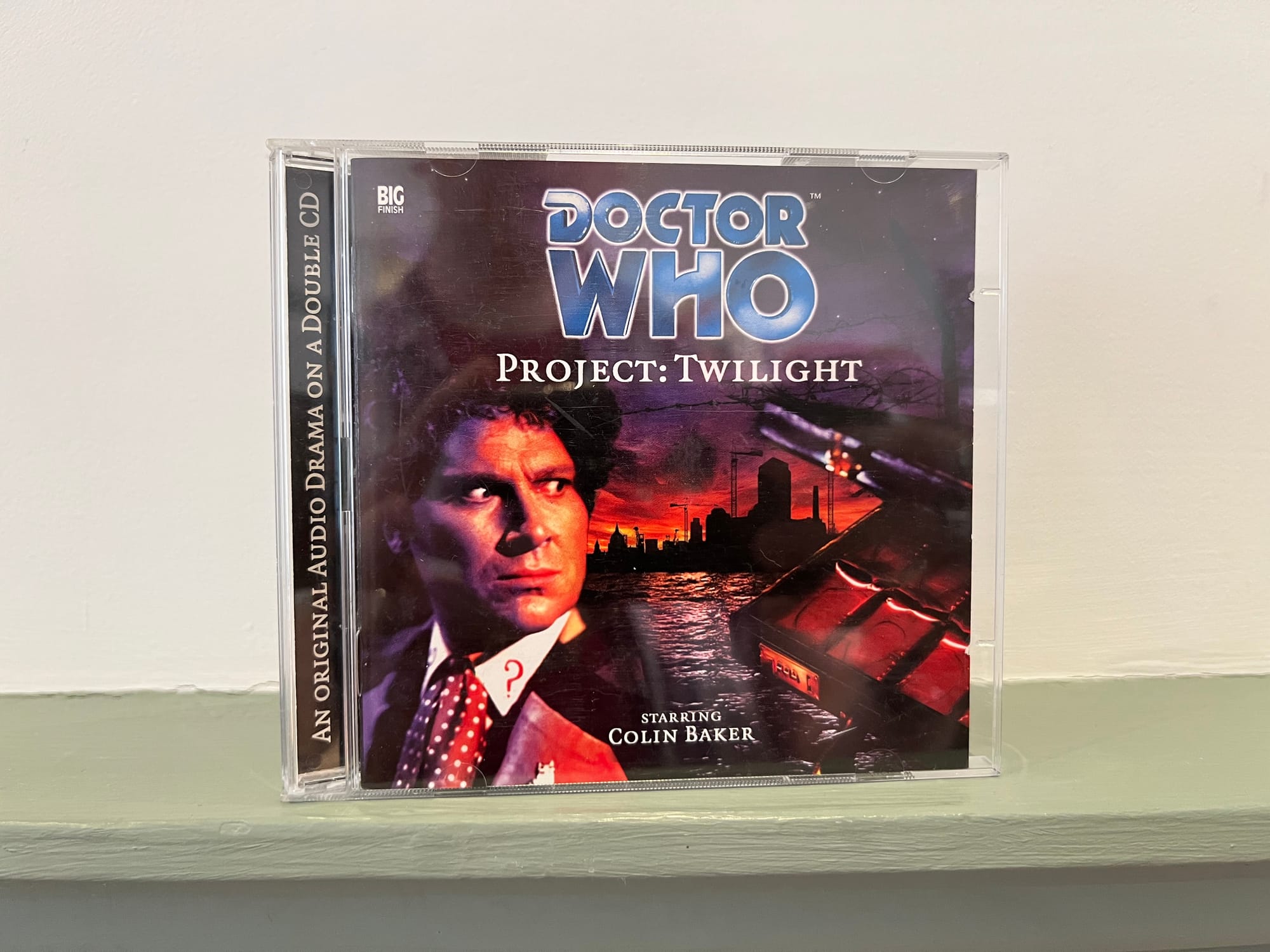
I originally had the idea for a vampire thriller set in a casino while covering a Las Vegas trade show for T3 Magazine in the late 90s. I was sitting in the bar of the New York, New York hotel with my editor1 at three o’clock in the afternoon and realised I had no idea what time it was. There were no windows and the light levels never changed whether it was day or night. And there was also a sense that maybe… just maybe… someone could get lost among all the slot machines and card tables. What better cover could there be for vampire gangsters?
My co-writer Mark Wright jumped at the idea when I mentioned it to him a year or so later - yes, I had escaped the casino without losing my shirt or my life!
As I wrote last week, we’d been asked by Big Finish producer Gary Russell to pitch a story for a full-cast audio drama in BF’s fledgling Doctor Who line. We both loved vampires2, so it seemed a no-brainer, especially as vamps feature so heavily in Time Lord mythos thanks to Terrance Dick’s classic State of Decay.
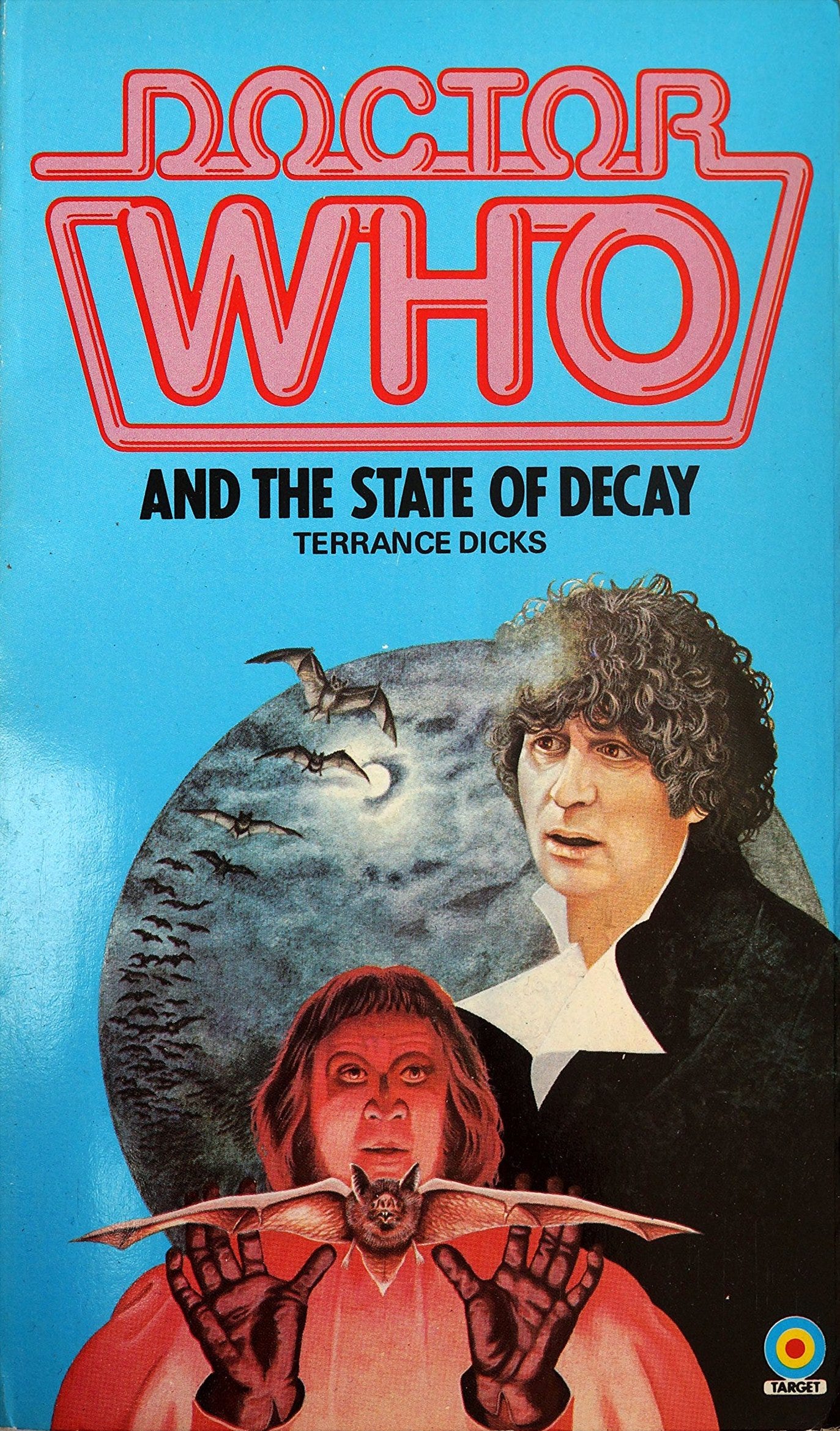
We mentioned the idea to Gary, who, unbeknown to us, had been approached by a number of writers wanting to pen a script pitching the Doctor against the undead. I think it was seven in total. Gary sent out a blind email inviting us all to pitch along those lines, which we did… and were turned down immediately. Once again we were devastated, feeling that we’d fallen at the first blood-soaked hurdle…
Or had we?
Six months later, I received a call from Mark3. He’d been talking to Gary, who had revisited our outline and had seen something in our story that he hadn’t noticed before. He was willing to give us a second chance as long as we agreed to some pretty substantial changes. Were we interested?
Were we? What do you think? We pretty much bit his arm off!
Unfortunately, that outline has been lost to a corrupted computer drive, but here’s what I remember.
The original title was Blood Money - appropriate for a story about a casino run by vamps, but Gary was worried people would confuse it with Jonathan Morris’ upcoming Blood Tide, the story that would precede it, coming out a month earlier in July 2001. We countered with The Twilight Plague, but Gary eventually opted for Project: Twilight.
In a nod to the idea’s origins, Blood Money was set in a Las Vegas hotel called the Britannia and centred around a young Japanese law student forced to strip at a dodgy club to pay the bills. The location was changed to spare Big Finish having to find a London-based cast capable of delivering convincing American accents.
Our Japanese student became Cassie4, a down-on-her-luck single Mum from the north of England, forced to waitress in the now-renamed Dusk casino to make ends meet.
The story also featured a Time Lord vampire hunter named Askran, a nod to the Gallifreyan rouge played by Jonathan Ainsworth in Audio Visuals, a series of fan-produced, not-for-profit Doctor Who radio plays directed by Gary Russell long before his Big Finish days. The idea that villainous Askran had been nabbed by the Time Lords and forced to hunt vamps to make amends for his past crimes. Gary liked the mysterious vampire hunter but nixed the idea that they were a Time Lord. Askran was sent spilling into the time vortex and was replaced by a half-vampire, half-cyborg hunter working for a black-ops organisation called the Forge5. The idea was that years ago, the Forge used to experiment on the alien tech that washed up regularly on Earth’s shores - largely thanks to the Doctor. During World War I, they had messed around with vampire DNA to create a new breed of super-soldier (yes, we were Marvel fans. Why do you ask?) Unfortunately for our meddling scientists, the resulting abominations had run amuck. Our state-endorsed vampire hunter - Nimrod - had been chasing the escaped blood-suckers ever since.
We sent in a new pitch which pretty much runs along the same lines as the story you hear in Project: Twilight, except for two main points:
In the outline, the Doctor knew from the outset that they were dealing with vampires, so much so that he was handing out garlic sandwiches to anyone working the case. At this point, we still envisioned Sylvester McCoy in the lead as the Seventh Doctor with his faithful companion Ace at his side, played, of course, by Sophie Aldred. Gary however asked us to ramp up the mystery, the Doctor finding out that the gangsters were vamps at the same time as the audience. Oh, and we were required to change our leading man as Big Finish needed a story for Colin Baker’s Sixth Doctor and his recently-joined audio-original companion Evelyn, played by the dearly-missed Maggie Stables6.
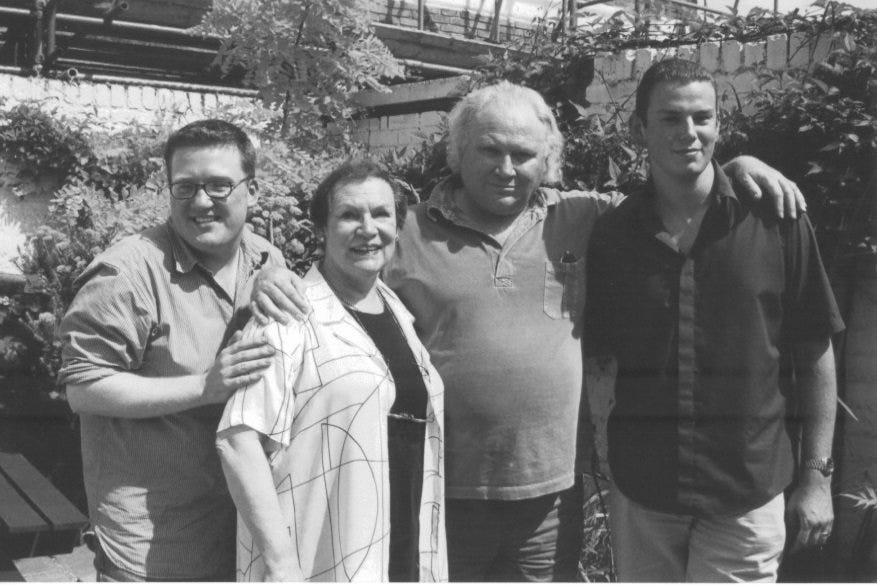
The Doctor also had two allies in the form of dodgy London cop Inspector Hawthorne and his assistant Detective Rosewood, both named after woods traditionally used to stake vampires. In the outline, Hawthorne first meets the Doctor when he returns home after a long shift and finds the Time Lord sitting in his lounge, Ace merrily making a fry-up in the kitchen. The Inspector is suitably disturbed to learn that the Doctor is investigating disappearances at a local nightspot owned by Reggie Mead, a gangster7 Hawthorne knows exceptionally well as he’s been in Mead’s pockets for the last decade.
Both police officers were cut by the time we dived into the scripting, although Inspector Hawthorne receives a name-check in episode one. For a long time after the CD was released, Mark and I talked about writing a series of occult adventures for Hawthorne and Rosewood. I still love the names.
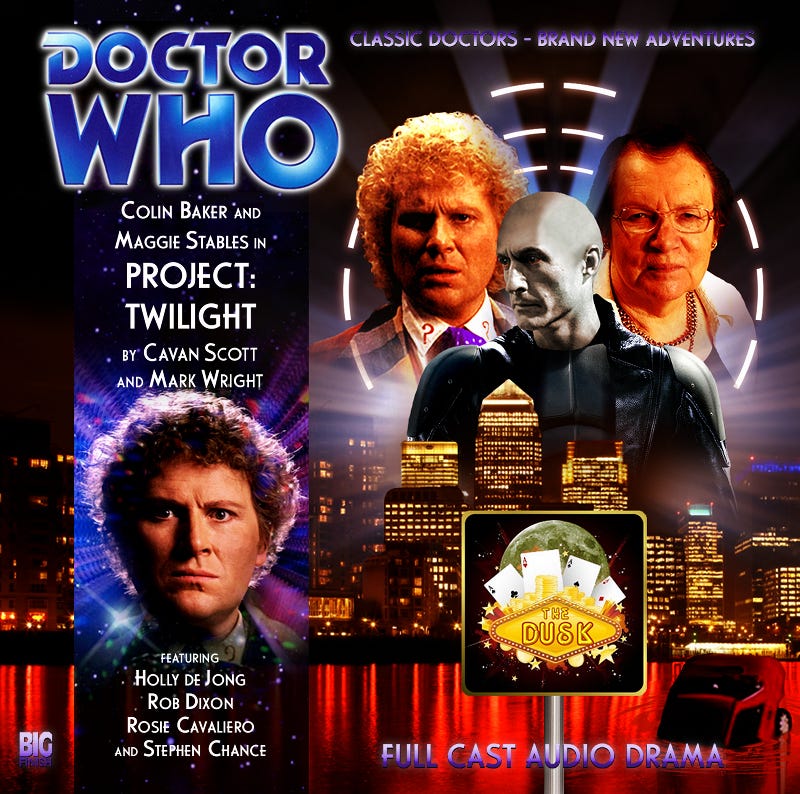
I have very little recollection of any of the script notes, but I remember two changes, both concerning our four-legged friends. The first I wish we’d kept in - Amelia8, our undead femme fatale - had a vampire cat who was found lapping blood from a saucer early in the story. The second I’m glad was removed. Reggie Mead originally had a sideline in illegal dog fights and took out his anger on the poor mutts towards the end of the story, which would have been a particularly hard listen. Doctor Who was skewed older at this time, a few years from its return to family viewing in 2005, and while we did push the horror elements far beyond where we would these days, violence against animals would have been a step too far. Interesting, as far as I remember, the idea that the Dusk would have strippers wasn’t nixed because of its adult connotations, but that stripteases would be difficult to, ahem, pull off on audio. Again, gritty though our original plans for Blood Money were, I’m glad we didn’t go down that route.
Project: Twilight was recorded on 23rd and 24th June 2001 at Moat Studio in London. I joined the cast for the swelteringly hot second day and was so, so nervous. I remember walking into the studio to be greeted by Colin Baker who introduced himself as if I had no idea who he might be. The 11-year-old kid who used to watch him on a Saturday night with my Grandma couldn’t believe I was in the same room as the Doctor, let alone shaking his hand. I’ll never forget beaming at Mark across the sound desk when we first heard the Doctor saying our lines!
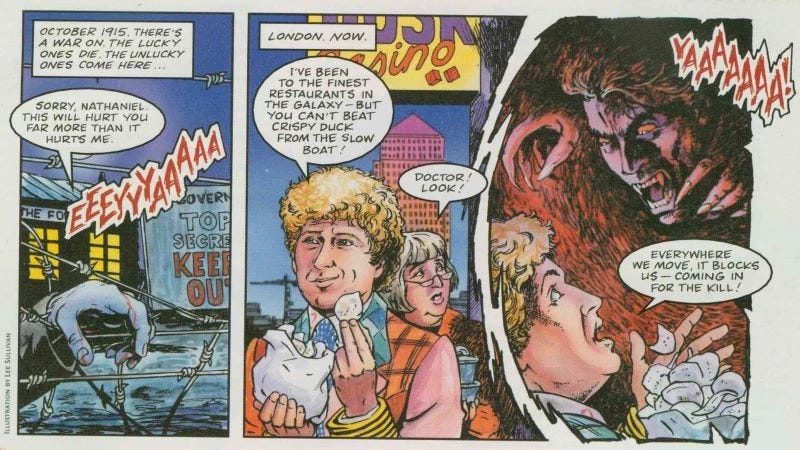
Released only a couple of months later in August, the finished story features a cliffhanger, which I won’t reveal here in case you haven’t heard it. A clever ruse to get a sequel, or the handiwork of two wet-behind-the-ears writers who didn’t quite understand how to land an ending? Who knows, but its success led to more Forge adventures and… to be honest… the career I have now. I will always be grateful to Gary for giving me and Mark a shot.
Oh and one last thing: originally I had a part in the recording, as a BBC newsreader heard in the background in the first episode… and I was dreadful, so bad in fact that when I first heard the finished production, I discovered I’d been replaced by producer Gary Russell. Quite right too. My performance was the real horror of Project: Twilight.
Doctor Who - Project: Twilight is still available as a download from Big Finish Productions for the bargain price of £2.99 and is also available on Audible.
Let me know which of my books, audios or comics you’d like me to feature in future posts by leaving a comment!
The editor in question was Rob Mead, who was later immortalised in Project: Twilight as Reggie ‘the Gent’ Mead, our principal gangster. Other T3 staff gave their names to characters in the play. Deeks, one of the first victims of the Dusk, was named after features editor, Russell Deeks and Amelia Doory got her first name from our receptionist Amelia and her surname from Kenneth Doory, T3’s art editor. ↩
The 1998 Channel 4 vampire series Ultraviolet was a huge influence on us at the time, as was Stephen Norrington’s Blade, released in the same year. The line from Wesley Snipes’ Daywalker to our half-human vampire Nimrod is pretty clear to see! ↩
By this time, Mark had actually moved back to London. The magazine he was working on — What DVD? — had relocated to Bakers Street, home of Sherlock Holmes, and taken my co-writer with it. The only thing we ever wrote while living in the same town was a short story for Bernice Summerfield: Down Among the Dead Men, a now-out-of-print anthology edited by . Everything else, all the scripts, novels and books were written separately, batting scenes and chapters back and forth through emails, a long time before the days of remote working and zoom calls! ↩
Cassie would eventually be played by Rosie Cavaliero who would continue to have a long and illustrious career in such series as Jam and Jerusalem, Lark Rise to Candleford, Prey, the glorious Worzel Gummidge reboot and many more! ↩
The Forge was a concept from a pitch I’d originally sent into a BBC competition in the late nineties for TV series set in a world where the Victorian era had rolled into the 21st Century. Never throw any ideas away - they always come in useful! ↩
We’d eventually work with Sylvester McCoy in Projects Lazarus and Destiny, and I’d produce a couple of stories for his Doctor in the New Adventure audio adaptations, Theatre of War and All-Consuming Fire. ↩
Mark and I had both recently read - and loved - Jake Arnott’s gangster novel, The Long Firm which led to the shout-out to the novel’s crime boss Harry Starks in the final script. Talking to Mark the other day, he said: “I interviewed Jake years later about his Doctor Who short story and told him about the Harry mention, and he was tickled by the idea.” ↩
Amelia was originally going to be our recurring villain, coming back for any potential sequels, but we were so impressed by Stephen Chance’s Nimrod that the Forge’s vampire hunter became the big bad of both Project: Lazarus and Project: Destiny, plus the short story Twilight’s End. That’s not a slight against Holly De Jong who gave a fantastic performance as Amelia. Aliens fans may recognise her as Newt’s mum from the 1990 Director’s Cut! ↩

